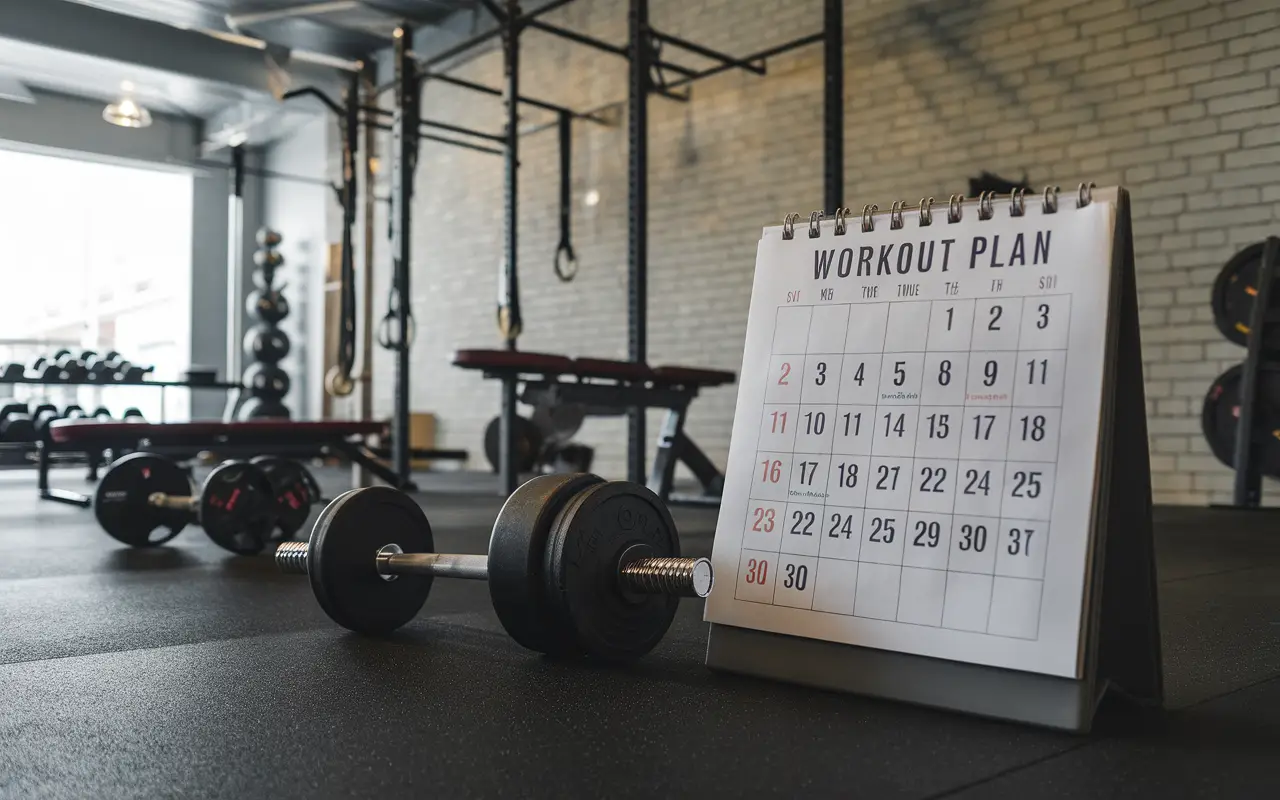Are you struggling to take that first step into fitness? Starting a workout schedule can feel overwhelming, especially if you’re unsure where to begin. Questions like, “How often should I work out?” or “What exercises are best for me?” can leave you feeling stuck before you start. The good news? With the right plan, starting your fitness journey can be easier than you think.
In this guide, we’ll explain everything you need to know to craft a sustainable and effective workout schedule, even if you’re a beginner. You’ll have the tools to set goals, build consistency, and see real results by the end.
Benefits of Having a Workout Schedule

Improved Health and Well-being
A structured workout plan can boost cardiovascular health, improve muscle strength, and enhance flexibility. Furthermore, Beyond the physical perks, regular exercise reduces stress, improves sleep, and increases energy levels. It’s not just about looking good—it’s about feeling amazing.
Building Discipline and Routine
A schedule helps transform workouts from an occasional activity into a habit. Over time, this discipline spills into other areas of your life, like eating healthier or being more productive at work.
Boosting Mental Clarity
Exercise is a natural mood booster. Sticking to a schedule trains your mind to overcome obstacles, releasing endorphins that improve focus and leave you feeling accomplished.
Setting Realistic Fitness Goals
Understanding Your Current Fitness Level
Before diving in, assess where you’re starting from. Are you completely new to exercise, or do you have some experience? Knowing your fitness baseline helps you avoid overexertion and minimizes the risk of injury.
SMART Goals for Beginners
Set Specific, Measurable, Achievable, Relevant, and Time-bound goals. For instance, “I want to complete a 20-minute workout three times a week for the next month” is more effective than saying, “I want to get fit.”
Key Factors to Consider Before Starting
Assessing Your Health
If you have any existing health conditions or haven’t exercised in a long time, consult a doctor before beginning a workout program to ensure you can exercise safely.
Choosing the Right Type of Exercise
Consider your interests and fitness goals. Want to lose weight? Focus on cardio. Interested in toning up? Incorporate strength training. Enjoy dancing or yoga? Explore those options to keep your routine enjoyable.
Types of Workouts for Beginners

Exploring various workouts catering to beginners is essential when starting a fitness journey. Here are some effective workout options that can help you ease into a routine:
Cardiovascular Exercises
Cardiovascular exercise, commonly known as cardio, is particularly beneficial for burning calories, enhancing heart health, and improving overall endurance. If you’re starting out, it’s a good idea to pick low-impact exercises that are gentle on your joints but give you a solid workout. Activities like brisk walking, cycling (on a stationary bike or outdoors), and swimming are excellent options. Aim for 20-30-minute sessions, 3 to 5 times a week. As you get fitter, slowly make your workouts harder or longer; additionally, consider incorporating light jogging or interval training as you become more comfortable.
Strength Training
Strength training helps you build muscle, speed up your metabolism, and increase your strength. For beginners, bodyweight exercises are efficient and require no specialized equipment. Start with basic exercises like bodyweight squats, push-ups, lunges, and planks. Also, aim to perform two to three sets of 8-12 repetitions for each exercise. Consider incorporating lightweight or resistance bands to challenge your muscles as you grow stronger. Additionally, Consider scheduling strength training sessions two to three times a week, allowing for rest days in between to let your muscles recover.
Flexibility and Mobility Work
Adding flexibility and mobility exercises to your fitness routine is essential. They help you move better and lower your chances of getting injured. Stretching and yoga can enhance flexibility, alleviate muscle tension, and promote relaxation. Aim to spend at least 10-15 minutes after your workouts focusing on stretching major muscle groups. Additionally, consider adding a dedicated yoga session or a stretching class once a week to enhance these benefits. Flexibility and mobility exercises not only support recovery from other workouts but also contribute to overall well-being and relaxation.
How to Structure a Weekly Workout Schedule
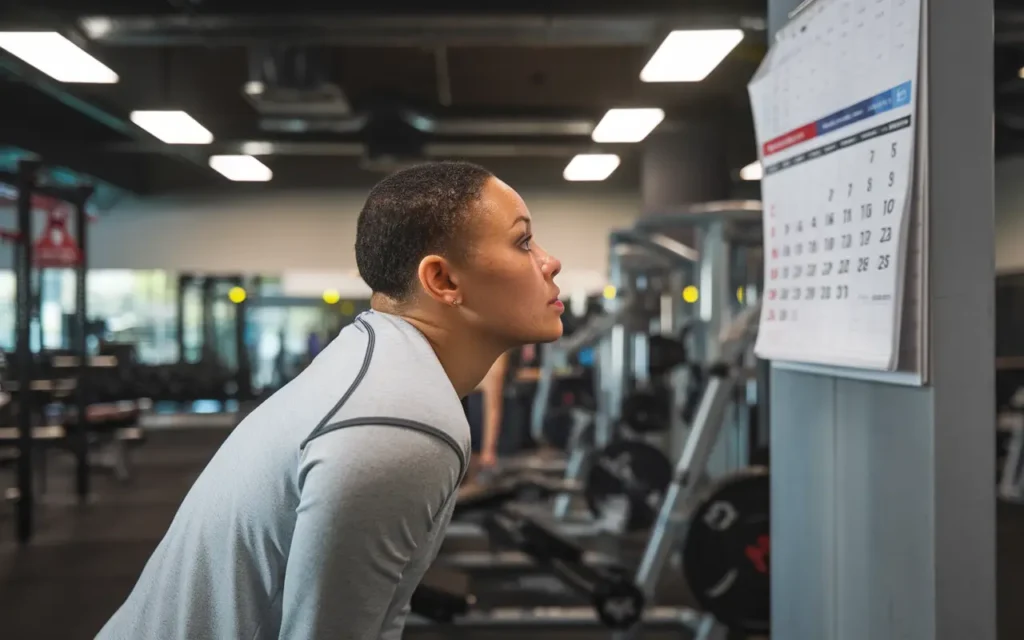
Creating a well-balanced workout schedule is key to building a routine that works for your body and goals. A proper plan ensures you’re covering all fitness areas while preventing overtraining and burnout.
Balancing Cardio and Strength
A beginner’s weekly schedule should include cardio and strength training. For example, you might alternate days between light jogging or cycling (cardio) and bodyweight exercises like squats or push-ups (strength). This combination burns calories and builds muscle simultaneously.
Active Recovery Days
Active recovery days are essential. Instead of complete rest, try low-intensity activities like walking, gentle yoga, or stretching. These activities promote blood flow, reduce soreness, and prepare muscles for the next workout. Active recovery days are not about pushing your limits but about giving your body a break while still staying active.
Rest and Its Importance
Rest days are just as important as workout days. They help your muscles repair and grow, and taking rest days also lowers the chance of injury. For beginners, plan at least one or two complete rest days per week. Overtraining can cause burnout and reduce performance. It’s essential to listen to your body and take breaks when necessary.
Monday to Sunday Workout Plan
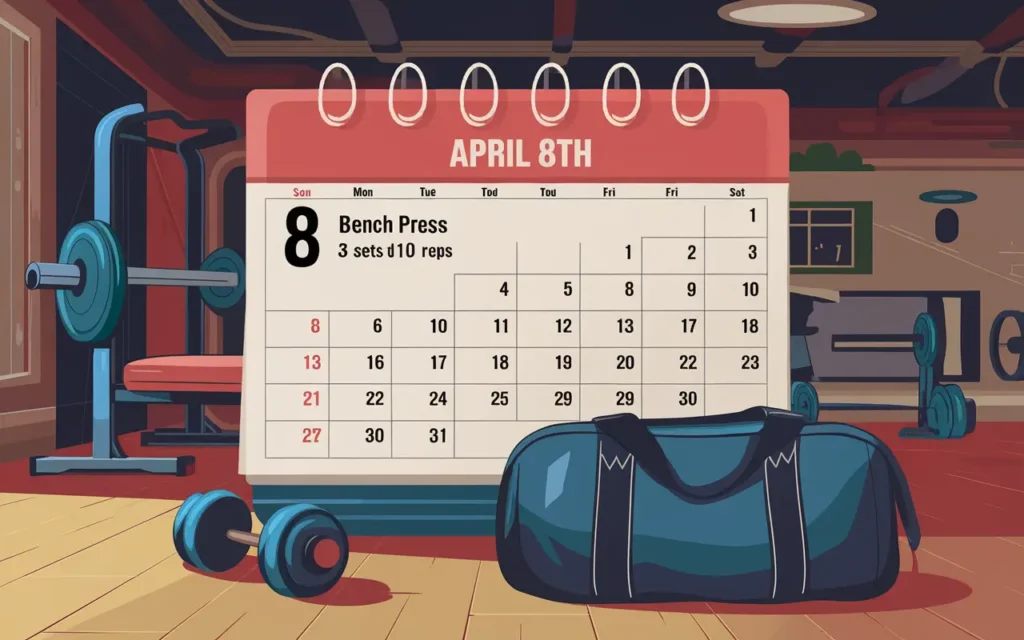
Here’s a sample 7-day workout schedule for beginners to follow:
| Day | Workout Type | Duration |
| Monday | Cardio: Brisk walking or light jogging | 20-30 minutes |
| Tuesday | Strength: Bodyweight exercises (squats, push-ups, planks) | 20 minutes |
| Wednesday | Active Recovery: Yoga or stretching | 15-20 minutes |
| Thursday | Cardio: Cycling or elliptical | 25-30 minutes |
| Friday | Strength: Dumbbell exercises or resistance bands | 20 minutes |
| Saturday | Cardio: Walking, hiking, or swimming | 30 minutes |
| Sunday | Rest or light stretching | — |
Time Commitment for Success
How Much Time Should You Dedicate?
For beginners, 20–30 minutes per session, three to five times a week, is enough to start seeing results. As your fitness improves, gradually increase the intensity or duration of your workouts.
Short vs. Long Workouts
Regarding exercise, the debate between short versus long workouts often arises. Research indicates that engaging in shorter, consistent workouts tends to be more beneficial than sporadically committing to longer sessions. For instance, dedicating just 15 minutes a day to exercise can yield significant health benefits and improved fitness levels over time. In contrast, a single 2-hour weekly workout may not offer the same advantages.
This daily commitment helps build a habit, enhances metabolism, boosts mood, and fosters better overall physical health. Short workouts can be tailored to fit various activities, making them more enjoyable and less daunting. Furthermore, daily exercise’s cumulative effect can improve endurance, strength, and flexibility. Incorporating brief, consistent workouts into your routine can lead to more significant long-term results than infrequent, lengthy sessions.
Creating a Workout-Friendly Environment
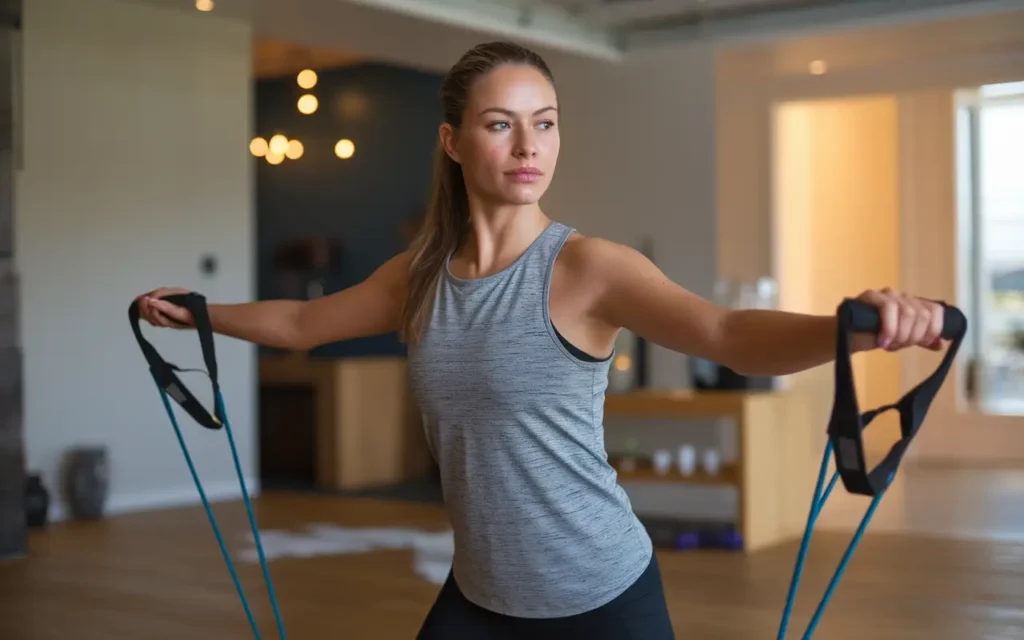
Finding the Right Space
You don’t need a gym to get started. Clear a small area in your home for bodyweight exercises or yoga. If you prefer the outdoors, parks are great for walking, jogging, or calisthenics.
Investing in Basic Equipment
Investing in minimal equipment, such as a yoga mat, resistance bands, or dumbbells, can significantly expand your workout options without breaking the bank.
Staying Consistent with Your Schedule
Starting strong is important, but consistency is what drives real results. Here’s how to stay motivated and stick to your workout schedule over the long term.
Strategies to Stay Motivated
- Set Milestones: Divide your goals into smaller, achievable steps. For example, completing three workouts weekly can be your first win.
- Reward Yourself: Celebrate small victories, like sticking to your schedule for two weeks straight. Treat yourself to something you enjoy. Buy a new workout outfit or spend a relaxing day at the spa.
- Visual Reminders: Use a calendar or fitness app to track your progress. Seeing your streak build over time can be a powerful motivator.
Tracking Progress
Document your fitness journey with simple tools:
- Journals: Record the exercises you complete and how you feel afterward.
- Apps: Use free fitness apps to track workouts, calories burned, or steps walked.
- Photos: Taking “before” and “after” pictures can help you notice subtle changes over time that might not show on the scale.
Importance of Nutrition with Workouts
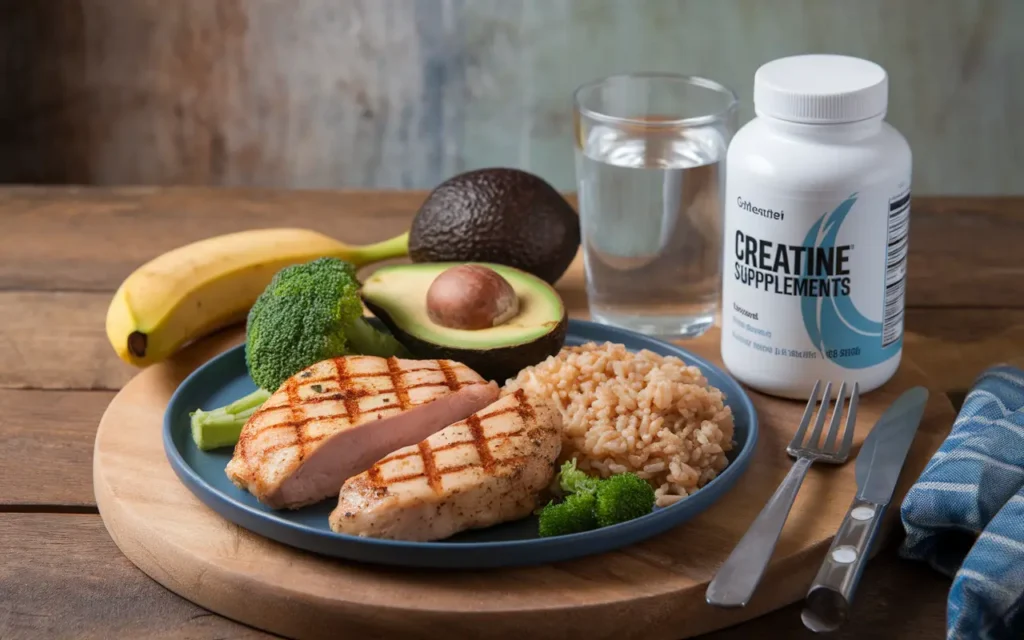
Eating for Energy and Recovery
Fueling your body correctly is as essential as exercising. Consuming a well-balanced diet with protein, complex carbs, and healthy fats enhances performance and speeds up recovery. Avoid skipping meals, especially before and after workouts.
Hydration Tips
Drinking enough water helps you keep your energy up and lowers your chances of getting cramps. Aim to drink water before, during, and after your workouts. For longer sessions, consider adding electrolytes to replenish lost minerals.
Avoiding Common Beginner Mistakes
Overtraining
Enthusiasm is great, but doing too much too soon can lead to burnout or injury. Listen to your body and take rest days seriously.
Ignoring Proper Form
Incorrect form can hinder progress and increase the risk of injury. Take time to learn the right technique for each exercise, whether through videos, classes, or guidance from a trainer.
Unrealistic Expectations
Fitness is a journey, not a sprint. Progress may be slow at first, but consistency pays off. Refrain from comparing your journey to that of others. Instead, concentrate on your own progress and improvements.
Warm-Up and Cool-Down Essentials
Importance of Preparing Your Body
A proper warm-up primes your muscles for activity, reducing the likelihood of injury. A 5–10 minute dynamic warm-up (e.g., arm circles, leg swings, or light jogging) increases your heart rate and blood flow.
Simple Warm-Up and Stretching Routines
- Warm-Up: Jumping jacks, bodyweight squats, or brisk walking.
- Cool-Down: Gentle stretches focusing on major muscle groups, like hamstrings, quads, and shoulders.
Adapting the Schedule to Your Lifestyle
Morning vs. Evening Workouts
Finding the right time to work out can make a big difference in consistency.
- Morning Workouts: Morning exercise can boost your metabolism and create a joyous day. It’s great for people who like to get things done early and avoid distractions.
- Evening Workouts: Evening workouts can be just as effective if you’re not a morning person. They allow you to de-stress after work and fit better into your routine if mornings feel rushed.
Making It Fit Your Routine
Building a workout schedule that aligns with your lifestyle is crucial for maintaining consistency and motivation. Here are strategies to help you fit your fitness journey into your daily routine:
- Plan Ahead: Treat your workouts as necessary as essential meetings or appointments. Set aside time in your calendar for your workouts and consider them non-negotiable commitments. This proactive approach helps you establish a consistent routine and minimizes the chances of skipping sessions due to scheduling conflicts.
- Stay Flexible: Life is unpredictable. Unexpected events may arise, causing you to miss a workout. Instead of stressing over it, embrace the idea of flexibility in your routine. If you miss a session, remind yourself that it’s perfectly okay—focus on getting back on track the following day. Consistency over time is what matters most, not perfection every day.
- Micro Workouts: On days when time is tight, remember that even brief bursts of physical training can be helpful. Incorporating micro workouts—brief sessions of 10 to 15 minutes—can make a significant difference in your overall fitness. Whether it’s a quick bodyweight workout at home, a quick walk during your lunch pause, or a few minutes of stretching, every bit of movement counts. Finding creative ways to incorporate these mini-sessions into your day can help you stay active without overwhelming your schedule.
How to Stay Motivated Over Time
Celebrating Small Wins
Recognizing progress—big or small—keeps you excited about continuing. Whether lifting slightly heavier weights or running a bit further every achievement matters. Share your successes with friends or family to stay encouraged.
Finding a Workout Buddy or Community
Exercising with a friend or participating in a fitness class can make workouts more pleasant and keep you accountable.Whether it’s an online community or an in-person class, the support of others can keep you motivated.
Signs You Need to Adjust Your Schedule
Recognizing Burnout
Feeling constantly tired, unmotivated, or sore may indicate you’re overtraining. It’s okay to scale back if your body needs rest.
Progress Plateau and How to Overcome It
It may be time to mix things up if you stop seeing improvements after a while. Try new exercises, increase your intensity, or set fresh goals to re-energize your routine.
FAQs
The best time is when it fits your schedule and feels most natural. Some people thrive on morning workouts, while others prefer evening exercise.
20–30 minutes per session is ideal for beginners. The duration can be raised gradually as they build endurance.
Not at all! Bodyweight exercises, outdoor activities, and minimal equipment can help you get fit at home or in a park.
Missing a workout isn’t the end of the world. Resume your schedule the next day and stay consistent.
Use fitness apps, journals, or photos to track strength, endurance, or appearance improvements. Celebrate milestones along the way.
Absolutely! Strength training and good nutrition will help you build muscle over time, even as a beginner.
Conclusion
Starting a workout schedule is one of the best choices for your health and well-being. It’s not about perfection but progress—taking small, consistent steps toward your goals. By setting realistic expectations, staying flexible, and celebrating your achievements, you’ll build a routine that works for you.
Remember, fitness is a journey. Every workout you complete brings you closer to a stronger, healthier you. Embrace the process; your starting workout schedule will become a lifelong habit before you know it.

